The Real Market with Chris Rising – Ep. 82 Rahul Bammi
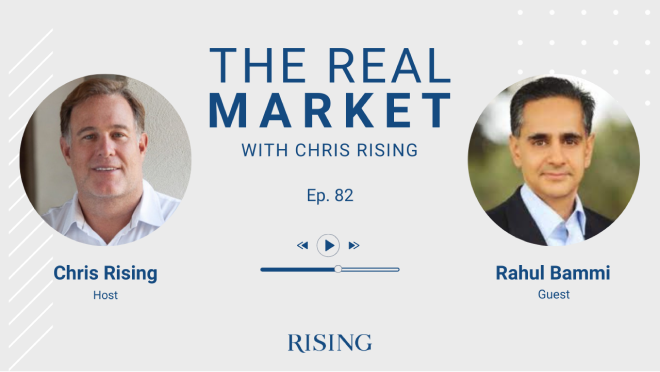
Chris Rising (00:00:02):
Welcome to The Real Market with Chris Rising, the only podcast that brings the real estate conference panel to your headphones. You’ll hear from superstars from every realm of commercial real estate, the biggest brokers, the most well-known architects, the largest investors, and the most visionary developers. You will learn what they do, how they do it, and what drives their success.
(00:00:23):
We’ll discuss the latest trends across regional markets, capital flows, both national and global, and we’ll explore technology’s role in shaping all of them. We’ll take a clear-eyed look at where we’ve been, where we are now, and what’s to come. Real conversations, real experts, real insights. This is the Real Market.
(00:00:50):
Welcome to The Real Market with Chris Rising. I’m excited today to have the chief business officer for View, which those of us who are starting to get back into the office full time, this is a podcast I want you all to listen to because Rahul Bammi, the chief business officer of View is here. We’re going to talk about some really interesting things that are happening as it relates to technology and buildings and specifically office buildings, but buildings in general.
(00:01:19):
Rahul, thanks for being here. I know it’s really exciting that we finally got to do this and is really important in this new world we’re in.
Rahul Bammi (00:01:27):
Chris, a pleasure to be here and I love the podcast. I’ve heard quite a few of the episodes, so glad to be on it.
Chris Rising (00:01:37):
Well, that’s terrific. Well, why don’t you give two minutes on View and what it is you all do? I will start with, you’ve got some great clients and some companies out there that I really, really respect, from Kilroy to Alexandria. Why don’t you explain what role View plays with those clients?
Rahul Bammi (00:01:57):
Sure. Chris, we’ve actually evolved, so I’ll take a couple of minutes. We’ve really now got two very distinct almost separate businesses, but I’ll step back a little bit. View’s originally Silicon Valley founded company, started in 2008. It got funded during the first round of the cleantech days as an energy-saving solution. A lot of the early folks came from the semiconductor industry or from solar or hard disk or some other version of the Valley that was something related to semiconductors.
(00:02:33):
At that point, really the thought was literally, how do we do something good for the world but do it at scale? Even then we said real estate is the largest asset class in the world and the thought really was, let’s take something like a window build in a semiconductor coding into it and reduce both the energy footprint of the building, make the buildings more comfortable and actually improve the experience people have.
(00:03:03):
I like to explain it to people along the lines of think about we look at our computers and have computer chips and we put nanoscale semiconductors on them and so on. We’re doing the same thing, but we’re putting it on these massive windows. You’re putting it on big building. That’s where a lot of the challenge was. I’ll describe the product a little bit and then I’ll talk about the company again.
(00:03:25):
We all know transition lenses, you go outside, they change with sunlight, they automatically get lighter and darker. Those are called photochromic because photons of light change the chromosome or the tint on them. What we do is very similar, but it’s electrochromic and we apply a current. An easy way how I explain this to my mom is to say, “We make sunglasses for buildings. You take big buildings and you have these giant 10-feet tall sunglasses.” That’s basically what we are doing, right?
Chris Rising (00:03:56):
Yep.
Rahul Bammi (00:03:57):
Now, it gives us some massive advantages because if it’s electronic, you can control it. With your tinting sunglasses when you go out, you don’t. It depends on the sunlight and they just change. We can control it, we can do whatever we like with it. When we started this, it was purely an idea. At that point, the largest… We started with a piece of glass that was the size of a postage stamp. It was literally about three years of R&D to get a technology, basically a chemistry and material science that actually worked and was reliable.
(00:04:33):
Coming from semiconductors with Moore’s Law and so on, we were very conscious of the fact to say, “We don’t know a lot about real estate. Let’s learn this and figure it out well.” We learned quickly, look, we need to make a reliable product. It better last 30 years. It should look good, it should be functionally the same. Then we had a semiconductor mindset. I said, “We want to make these in the millions, not in the tens or thousands or hundreds. These need to be literally in the millions. That’s the only way you transform an industry.”
(00:05:03):
Early on we made a decision, we’ll, one, make a bulletproof rock-solid product. Then the second one was, we’ll need to build this ourselves. We said, “This is new to the world.” So we did what Tesla did, which is Tesla could very easily have said, “I’ll build a battery and license it to Mercedes and GM.” The reality is I think we all know Mercedes and GM would’ve, no offense to them, probably screwed it up. Said, “Okay. We’ll be vertically integrated.”
(00:05:29):
We built our own factory. We obviously made the semiconductor codings, but we also said we are going to design the electronics and the network that goes with it. We’re going to design the software and make it a complete end-to-end system. The nice thing is here in the Valley people dream big and all the talent exists around us so we hired electronics folks, we hired chip design or system designers, we got software folks and so on and essentially built the full system.
(00:06:02):
Then the first version of the product, we got out, it worked. It was like it did what it was functionally supposed to do. It was fully integrated. We were proud of it. Every window is essentially IP addressable individually, where I have a network operation center about 50 feet from where I’m sitting, where 24/7, we know exactly how every View window installed anywhere in the world is operating. We do software upgrades, just like Tesla does, over-the-air software upgrades. We do that every couple of months.
(00:06:36):
We’re like, “We can make this a living breathing better… Completely a tech product.” It’s from a dead static wall to a smart living product. Now, like any startup, we went through our journeys. We made the first one. We realized we loved our product. Like most people who make products do. Architects looked it and said, “Yeah, I wish that looked slightly more neutral and I wish it was this, I wish it was that.” You go through those cycles.
(00:07:02):
The other cycle we went through early on was people just not knowing that you exist. When I first came on board, I used to do this as a test. I’d go to a conference and I’d say, “Hey, how many of you know of View?” About 10/15% of the hands would go up. This is in 2016. When I was doing that before the pandemic, about 80% of the hands would go up. I’m like, “Okay. At least we got to that point.” Then as we were going through that, we also said, “We’ll take a very engineering and science-based approach to this.”
(00:07:33):
Some of the first projects we did… We were lucky enough to do some big hospitals in Canada, we did some Kaiser Permanente facilities, we did Netflix’s headquarters here in Los Gatos and we’d keep hearing this from people saying, “I just feel better in this building.” You’d see people saying, “I feel calmer. I’m less stressed out. I like being here.” Then it hit us. We’re humans. We all go for hikes on the weekends and so on because we like being in the sunlight. We like the natural light. We said, “How do we quantify this?” The industry has not thought about this. It’s like we pay a lot of attention… Historically, real estate has paid a lot of attention to should I put a pool? Should I put a gym in the building? Should I do other things? But it’s more qualitative when it comes to design features. We were all engineers. We said, “Let’s go quantify this stuff.” As we stepped back, we actually… And some of our customers pushed us to do this.
(00:08:33):
I remember talking in the early days to Google and we’ve now done five buildings with Google. At that point, I remember Dave Radcliffe telling me, “We are a data-driven company. I believe it’s true, it’s a better environment, but prove it to me. Show me data. I need it for my engineers.” We actually worked with academics from several universities where we said, “You guys work with our customers and do some independent studies.” We were blown away even though we expected better results.
(00:09:02):
They actually measured this in A/B studies where Netflix campus is a perfect example. They have four buildings, they’re all connected by these sky bridges. Two of them have View and two of them don’t. The buildings with View, people have fewer headaches, they have less eye strain. They actually say, “My productivity is higher.” When they ask engineers to rank all the amenities they put, they listed like 10 different things. We actually beat out free food.
(00:09:32):
It was like, “I want View because there are no blinds in our buildings and they have the outside view.” Then believe it or not, it was access to restrooms, how far they were from a restroom and then it was free food. Then there was a whole bunch of other things. We are like, “Okay. Let’s quantify this.” We did a lot of that and what we found is really three things that resonate with people. One, the experience is way better. Now we can finally quantify it and say the experience is better.
(00:10:00):
The second was what we originally started with. The energy performance of the building is much better. That’s actually the easiest thing to prove. It’s just physics. You keep heat out of the building, you have abortive heat, you keep radiating heat out. You can measure it. It’s easy to model, it’s easy to prove out. We’ve done that. Those were the first two we did. Then the third one, which we early on realized as we were putting all our windows in and doing the networks and the fact that our windows need power and data, we had an early realization and I remember talking about this even in 2016 saying, “There has got to be a way to make buildings a lot smarter.” For us it was a natural thing. I grew up, just to give a little bit of context, as a chemical engineer who switched to WA in grad school. If you remember you, no offense, you look old enough, similar to my age group where you probably remember the Motorola StarTAC phones.
Chris Rising (00:11:01):
Oh, of course, of course.
Rahul Bammi (00:11:03):
That was my thesis work. I did process development of those.
Chris Rising (00:11:06):
Wow.
Rahul Bammi (00:11:07):
We saw the evolution of the whole… First the internet and then the mobile industry and so on. Even then I remember saying, “Look, when I look at buildings, I use a phone every day. I drive to work every day. My phone’s really smart, my car is somewhere in between, my building’s pretty dumb as a user.” It may not be too behind it, but I’m like, “How do we make these buildings more like our phones?”
(00:11:31):
That’s where we actually stepped back and said, “Let’s really look at these wires and so on we use and have a completely different vision of what a building can be.” We started with that and said, “This is…” And the context is important. Today everybody talks about air quality and occupancy and so on. We were thinking of this six years ago to say as I was going to construction sites, I saw this myself and I’m looking at buildings and saying, “Okay. So there are 10 different sensors going into a building and there are 10 sets of cables.
(00:12:02):
That sounds like pretty wasteful. Why can’t these all sit on a common converged network? Why can’t these all be cyber secure? Why can’t they all actually talk to each other cleanly?” When I say talk to each other cleanly, is people like you have all that data and information in usable forms, not just data sitting on servers somewhere but in usable form. Then you can actually make-
Chris Rising (00:12:30):
And ownable, monetizable form.
Rahul Bammi (00:12:33):
Exactly. We started this vision of how do we make building smart? Now we’ve done that where all our buildings, when they get a glass, they actually get a full… Effectively a cyber secure converged network for free. It comes with the glass. You see Google doing this in New York. They’re actually running several other sensors on our network. A lot fewer wiring, less labor, more secure, and data flows into a common data link where they can make user fit and do all sorts of analytics.
Chris Rising (00:13:09):
Let’s take a breath because this is a lot and I want to break it down a little bit.
Rahul Bammi (00:13:12):
Yep.
Chris Rising (00:13:14):
When I’m looking at your business model, is the majority of it ground-up development or do you also do adaptive reuse?
Rahul Bammi (00:13:25):
Great question. Historically it’s been about 75% ground-up development, 25% has been renovations. We’ve historically done a lot of offices obviously and offices means both the corporate occupiers as well as developers. We’ve done airports, hospitals. We’re-
Chris Rising (00:13:46):
Were those renovations or were those ground-up?
Rahul Bammi (00:13:49):
Both. We’ve done both. If I look at airports, we’ve done both existing terminals being renovated. San Francisco, we did SFO terminal three, we’re in the process of doing the next terminal… I’m sorry, we did terminal one. We’re in the process of doing three. Logan, we did three terminals all were renovations, DFW, we’re doing multiple terminals renovations as well as new builds. We do-
Chris Rising (00:14:14):
How do you standardize the size of the windows and then what do you do when someone is a renovation and it doesn’t meet your standardization?
Rahul Bammi (00:14:24):
It’s a great question. That’s one of the things that we are still working on today. This was a discovery to me and I was blown away when I first came into real estate. Windows are actually not a standard size. I was shocked by this when I first saw this, right?
Chris Rising (00:14:43):
Yeah.
Rahul Bammi (00:14:43):
Like, why? Then I discovered as we dug in deeper with designers and architects and stuff, there’s no good reason. It’s just-
Chris Rising (00:14:51):
Well, other than architects want to differentiate themselves and designers want to differentiate themselves.
Rahul Bammi (00:14:56):
See, and even that’s okay. The intentional differentiation’s fine. What we found very often was an architectural designer, a window that’s five feet by 10 feet and then you go down a wall and one window’s five feet and the next one is four feet, 11 and a half inches and the next one’s five feet 0.5 whatever. We’ve tried to drive standardized… So we can handle non-standard sizes. That’s not an issue.
(00:15:20):
It’s not efficient from a manufacturing perspective, so we work with customers and as we’ve gotten more well accepted at this point we are installed in about 40 million square feet. We’ve got another 60 million that’s been designed using View. Early on we just did what customers asked, but then as customers have gotten to know us better, we worked with them to say, “Let’s standardize them. It’s simpler for you. It’s simpler for me. It helps everybody. Let’s do this.” And they’re generally willing.
Chris Rising (00:15:48):
What is the cost differential just on a percentage basis for it to be the smart glass that you all produce versus if they went to some other manufacturer for double pane glass and all that kind of stuff?
Rahul Bammi (00:16:01):
That’s a great question. The world changed about a month ago and I’ll explain why. First I’ll talk about what we lived through over the last few years, is our glass, like the installed cost of the glass with smart glass, because as you know, the cost of the glass is not the biggest difference, it’s the labor. If you look at the installed cost with View, it was about 50% more expensive on a curtain wall. Sometimes it’s 40%, sometimes it’s 45, sometimes 50, I’m just using 50 as a round number.
(00:16:33):
On a building basis what that generally meant was it added about 1%, one and a half percent of the construction cost of the building because there were a few offsets. When you put glass in, we could reduce the HVAC size for example. Things like that. What changed about a month ago was the Inflation Reduction Act has now a 40% tax credit for using smart glass.
Chris Rising (00:17:02):
Wow.
Rahul Bammi (00:17:04):
Are familiar with the solar tax credit?
Chris Rising (00:17:06):
Oh, very much so. Yep.
Rahul Bammi (00:17:07):
It’s the same thing except that with solar it was 30% that it had gone down to 26 and at this point, I’m not sure if it’s 26 or 30. In our case it’s 40 because there’s 30% for the glass and there’s 10% for American made tax credit. Our factory is just outside Memphis so it’s all US-made product. There’s a 40% tax credit.
Chris Rising (00:17:32):
Wow.
Rahul Bammi (00:17:33):
Today it is exactly the same cost as regular and it might even be cheaper in some cases as double pane windows. I think of it this way. We’ve gotten a lot of inquiries in the last month and maybe another way to put it is we did about $75 million last year. This is when people were willing to pay a 50% premium on their curtain walls.
Chris Rising (00:17:56):
Wow.
Rahul Bammi (00:17:57):
Now, that premium’s gone. It’s become a complete no-brainer. It’s brand new. I guess the bill passed about four or five weeks ago so we’re part of it. This is a great time to kind of… And it’s precisely-
Chris Rising (00:18:18):
Does that apply to both commercial and residential?
Rahul Bammi (00:18:20):
Everything. In fact-
Chris Rising (00:18:24):
Does this then make you say residential world may make sense or does it keep you more focused on commercial?
Rahul Bammi (00:18:33):
We do both. We are actually doing a lot of multi-family right now. Some of it is just as you’ve seen what’s happened with COVID and so on with offices, so there’s a lot more multi-family being built. I’d say in the past before this office, our value proposition was clearer. Residential sometimes people struggle with cost, but people love the idea. Everybody I’ve talked to as a customer in the last five years would say, “Oh, I wish I could have this at home.”
(00:18:58):
We’re doing a lot of multi-family, we’re not doing single family yet, but multi-family we’re doing… We have I think somewhere around 40 or so multi-family towers that are in our queue in terms of backlog. It’s become a complete no-brainer. The tax credit, even the reason it got included, the DOE did a study and has basically said using smart glass or electrochromic class is one of the best ways basically to reduce the carbon footprint and energy of buildings.
Chris Rising (00:19:37):
Since that all passed, have the big boys started calling, the Andersen Windows and those kind of people? Because it sounds like you guys are in a very unique position.
Rahul Bammi (00:19:48):
Yes, we have some of those conversations going on and then your peer group, so if you look at some of the largest developers in New York, in California where they’re making the decision for the whole building. So from that perspective, we are also hearing a lot of existing customers who’ve used us in one project and we’re on their second one who’ve suddenly said, “Okay. Now I have six projects, actually let me reserve capacity for my next six buildings.”
(00:20:19):
The reality is we do expect to get… Demand should go through the roof for this and we are seeing that interest level. Yeah, we are getting a lot of interest for office, we’ve done a lot of life sciences.
Chris Rising (00:20:31):
Well, let’s take it around the technology itself. Let’s do a little dive into what… We do a lot of surveys of our tenants and one of the number one things coming out of COVID that we’ve seen is people want to know air quality. That seems to be a very clear thing. With all the MERV filters and everything and all this stuff, the buildings are doing a good job of being able to provide people with that information.
(00:21:01):
When you look at the information and all the data that you’re able to bring through the windows, what would be the most relevant information for people who spend every day in a building?
Rahul Bammi (00:21:13):
That’s a great question. One of the things we actually did in 2019 or so was precisely this question. We were thinking about air quality even earlier and even before COVID, there are some studies… There’s actually a very famous study out of Harvard about five, six years ago, which says that as the level of carbon dioxide goes up, people’s cognitive ability goes down. They start feeling… You hear people in a room saying, “I’m feeling stuffy.”
(00:21:42):
That’s usually because there’s mostly CO2 in the room. Even at that point what we did was in addition to that, we designed our own sensors. We expanded beyond windows and actually designed these integrated sensor modules that measure CO2, air quality, humidity, temperature, occupancy, all of the variables you’d normally measure. The reason we made a single unit was we said, “One, we want to make this much lower cost to install. You install like a module with eight sensors instead of installing eight separate things and then collect the data.”
(00:22:19):
Then what we’ve also done is I’ve got a software team that’s actually using… First we started with let’s take the data, let’s give people that information. Then we went the next step and said, “Let’s tie that with occupancy and let’s make it better.” This was make the environment better and when I say make the environment better, two ways. One is for people, the second is for building operations or energy usage.
(00:22:46):
The building I’m in, I’ve got these sensors all over. It’s about a 60,000 square foot plate. We’ve collected about 3 billion data points this year. What it’s doing is at any given point, if occupancy is high somewhere, it increases the air flow.
Chris Rising (00:23:02):
Wow.
Rahul Bammi (00:23:02):
When occupancy is low, it’ll actually reduce the air flow. It’ll dim the lighting, it’ll reduce the temp, the HVAC, it’ll reduce the HVAC consumption. It’s essentially completely automating the process. What we’re seeing already is there’s about a 20 to 25% energy reduction possible in buildings by automating all this with zero discomfort to people. Two, on the experience front, exactly where you mentioned the air quality insert is we cannot just measure it, but you can do something about it and do something about it, automate it.
(00:23:40):
Meaning so you don’t have to have somebody sitting there now saying, “How should I respond to this?” It’s just completely automated. We can dial down or up the level of automation that people feel comfortable with. That’s possible. We are making the software products to do that, the analytics tools and the hardware. Then what we also did was we went a step further. If you go to DFW airport for example, they’ve got these View sensors across two of their terminals.
(00:24:12):
We intentionally went with an airport to start because airports are much more stringent. There’s 50,000 people going through a terminal every day. We said, “If they work in this environment, they’ll work in any office building.” We did that, but then we heard this from our customers so now what I’ve done is actually released software products that will work with my sensors or anybody else’s sensors. I don’t want you to get locked into an all-View solution because at the end of the day I want to give you maximum flexibility.
(00:24:43):
What we’ve done in technology is we’ve built the plumbing. The plumbing comes with the windows. If you don’t install our windows and you have an existing building and say, “Rahul, I want to make my building better and I want to provide better air quality and data to my tenants.” I can literally ship a box and, one, make your existing network completely cyber secure. It’s a security product. In fact, we bought a company for cybersecurity, we built it into our product, so we can do that.
(00:25:11):
Then I can actually provide you all the way from, you want sensors from us, we’ll provide you the sensors and the software tools and the basically the analytical solutions which there’s a ESG module to reduce carbon and energy. There’s an experience module to give more information to your tenants, to your property management. How is the space being used? We are working on extending each one of those to go the next step. We have a third one on building operations. As an example, I have a release product that if you’re familiar with RXR in New York.
Chris Rising (00:25:46):
Yes.
Rahul Bammi (00:25:48):
They are running it in about 25 million square feet where this building performance product is actually giving them… It’s a data lake, it’s collecting data from their HVACs, BMS, every system, elevators and so on. It’s telling them how to optimize maintenance frequencies, how to change filters and when to reduce that. They’ve actually reduced energy consumption.
(00:26:12):
One of the things we realized, once you got beyond the dimming lighting and HVACs, there were buildings where there were periods in the afternoon where elevators were not being used, so you don’t need to have three elevator banks running. You can shut down two of them, never longer than a 20-second wait time but actually massively cut down the energy on that. You can start making much smarter decisions and these are machine learnings discovering them for you. That’s live and running there.
(00:26:44):
You mentioned Kilroy and Alexandria earlier. Kilroy is using these same solutions. Kilroy has reduced their truck rolls by about 75% across the buildings because they can monitor their entire portfolio using our products. They know exactly how each building is running at any point, if there’s any failure on a system they know it. To give you an idea of the cybersecurity aspect, what the benefits of this are, apart from the fact that you don’t get hacked, which is becoming worse and worse in this world, is they’re able to… Earlier if you wanted to have a firmware upgrade on your HVAC, whoever your HVAC supplier was, sent in someone. They didn’t upgrade, the upgrade may have taken 30 minutes but they billed you for a four-hour service call or a six-hour service call.
(00:27:43):
We now do this where you give them a remote fully bulletproof tunnel, secure tunnel. It’s running through our secure tunnels over a secure cloud. Somebody logs in. The entire exercise takes 15 minutes, nobody comes on site. It’s recorded, it’s auditable, it’s completely secure, your truck roll went away.
Chris Rising (00:28:10):
Wow.
Rahul Bammi (00:28:11):
Kilroy is doing that across their portfolio. Alexandria does that. RXR is doing it now. Tishman is actually in the process. They’ve rolled out about… And this is even without glass and all their existing portfolios. Tishman, I worked with Simon, we’ve done half his portfolio, he’s doing the other half now. We’re seeing… But broadly three big buckets of benefits there also. Building operations, cybersecurity, tenant experience.
Chris Rising (00:28:38):
Yeah. What’s the UI for the building operations people? Is it a mobile app? Is it web-based? What’s that user experience?
Rahul Bammi (00:28:52):
All of the above. We have a web base if you want to do a lot of things at the same time. We have a tablet. We have a mobile app, and all three are available. We’ve been actually… An RXR has been a great testing ground for this. You can have your engineering team and do it on the web-based thing but then all their property managers have an app that they can pull up anytime on their phone and do what they need to.
(00:29:18):
We’ve elegantly designed all the way from an app you can give to your tenants to an app you can give to your property managers, to much more functionality for your own team and within your own team on any platform. In fact, we’ve even gone further because I have a few customers who basically said, “I have my own app so I don’t want another app.” Which I completely sympathize with.
(00:29:44):
In those cases we have APIs and connectors and so we’ll feed the data into… If you’re using a tenant engagement app, sure we’ll feed in… For tenant data, we’ll put it there. If you’ve made your own in-house app for something else, we have APIs for it. I’ve even set up a service marketplace where we’ve so far put about 12 companies into it so there are other energy-saving solutions and so on where they all have connectors and we are going to grow that to about 50 in the next 12 months.
Chris Rising (00:30:15):
One of the interesting things I’ve read lately, especially after the federal legislation that you mentioned was passed and all, is there’s starting to be some pushback from people who don’t really understand what they’re pushing back against. The state of Louisiana Pension Fund said they are going to reject using BlackRock because they don’t believe in ESG and all.
(00:30:35):
But all of it we can chuck lot and all, but at the end of the day I go back to the only reason we’re all focused on this, yes there’s a greater cause and all that, but at the end of the day we want our buildings, whether office or apartment building, to be more efficient and we want to lower our cost. When you install, let’s say the full package of View, so the whole building, I think America Center too in San Jose has this and we looked at underwriting-
Rahul Bammi (00:31:07):
Yes, [inaudible 00:31:08].
Chris Rising (00:31:08):
Yeah. We looked very specifically so I’m asking a leading question because I know the answer, but what do you think you can go back to someone and say, “Look, you may not like the politics of all this stuff but when you put in View and you use this technology, you’re going to see X amount of reduction in your operating expenses.” What are you seeing?
Rahul Bammi (00:31:29):
It’s a great, great question, and there’s a couple of answers. One is just the windows alone. If you’re making a modern building today, on an annual basis we’ll save somewhere between 8 to 15% of your energy usage. The reason for a wide range is it depends on what other things you’re doing on the building. If you use the absolute most expensive best chiller possible, the savings maybe on the lower end, but you will save somewhere around 10% plus minus on pure energy, right?
(00:31:58):
That’s one. The second one with windows is, and I realize this accrues to the tenants rather than you, you don’t put any blinds up in the buildings.
Chris Rising (00:32:07):
Yeah.
Rahul Bammi (00:32:08):
That’s a generally… And in a good building in a glass where you’re putting motorized blinds and stuff, that’s a pretty substantial cost.
Chris Rising (00:32:15):
Yes.
Rahul Bammi (00:32:16):
How you negotiate the TI, it’s money that’s not being spent. That’s on the glass itself you see that and those energy savings would be every year. The other thing it actually does is, and more and more cities are doing this whether we like it or not, your rates go up during peak periods, rolling blackouts, we both live in California, we know what PG&E does, but is we are providing the maximum energy savings at times of peak demand. In those cases your peak, we are reducing peak demand by about 20%, even on a new building.
Chris Rising (00:32:51):
Wow.
Rahul Bammi (00:32:52):
That’s a real saving when it comes to it. Those are very easily quantifiable. That’s windows. Then I’ll go to the software products we talked about. There the building performance and I was mentioning the energy there. We’ve done some studies. We’ve eaten our own dog food and piloted this, Microsoft has done their own on similar solutions. They actually did one with Brookfield I think in One Manhattan West, I think that’s the Brookfield headquarters and so on.
(00:33:23):
We’ve got similar results that in a normally occupied building, and I’m not talking during COVID, I’m like normal operations, there’s another 20 to 25% energy reduction possible with the building with just using the data intelligently in automating that.
Chris Rising (00:33:40):
That’s amazing. It’s just… Yeah, I spent a lot of-
Rahul Bammi (00:33:43):
Regardless of your view on the climate, it’s better.
Chris Rising (00:33:48):
We spent a lot of time and for a period of time had America Center too under contract and we got very smart on that and that’s why I first got introduced to your products. Since that time there’s a lot more competition in the market that you all deal with. I do think what’s unique about View is your manufacturing capability of the windows not just selling the software. Where do you see this going?
(00:34:14):
Especially if you’re installing the windows, can the infrastructure in those windows be used for other things like antennas? Can View solve the frustration that we all feel when we’re in a major city and we can’t get cell phone connections because the towers can only do so much? I say it kiddingly, but where do you see View going in this over the next few years?
Rahul Bammi (00:34:39):
That’s a great question. That was exactly our intent when we started going down this path. We said, “How do we make a building smart but also connected?”
Chris Rising (00:34:49):
Yeah.
Rahul Bammi (00:34:49):
Today in this building, in fact I think you may already see… I don’t know if you’ve seen the windows behind me, there’s some glass.
Chris Rising (00:34:57):
A little bit.
Rahul Bammi (00:34:58):
You see a little bit of some video moving?
Chris Rising (00:35:01):
Yes.
Rahul Bammi (00:35:02):
These are transparent screens on the glass. That’s one application we are doing is you can use it for meetings for Zoom and so on. What we did do was we built in the… And the reason I pointed this out, every window we install, we’ve already future-proofed and put in enough capacity in the cables to carry high-definition video to every single window.
Chris Rising (00:35:24):
Wow. On the outside or the inside, or?
Rahul Bammi (00:35:27):
Just on the inside. The bandwidth doesn’t matter. The reason we couldn’t put something like this on the outside is the UV would damage it.
Chris Rising (00:35:36):
Okay. It’s not a product yet that you could use to all of a sudden sell advertising from your buildings?
Rahul Bammi (00:35:43):
No. Yeah, because those screens are outside. You’re right. It’s candidly not cost-effective for that today. On the inside, you can. These are organic LED screens. We are very, very careful about reliability, so the reason we put them on the inside is our windows are blocking all the UV. To your point, in the building infrastructure today, we put a fiber in the vertical riser and we use coax that goes across the horizontal plane.
(00:36:12):
Horizontally and in building, we can carry 10 gig per second data across the plane. On the vertical riser, just to give you an idea, we’re putting in over 90 strands of fiber. We are using three today.
Chris Rising (00:36:26):
Wow.
Rahul Bammi (00:36:28):
The other 93… And the reason we designed it that way is similar to how people laid cables under the fiber in the ocean was we’re like, “We are going to do the work anyway now, let me future-proof it for the next 30 years.” It’s much more expensive for you to decide six years from now, “Hey, let me go install fiber in the whole building now.” Right?
Chris Rising (00:36:49):
Yeah.
Rahul Bammi (00:36:50):
We’re like, “Let’s do it when you’re doing this right now.” One of the things we did, even to your point on signals, I have a full team that came out of places like Qualcomm and so on where we’ve already designed the solution you talked about. It’s a CBRS-based neutral host. My phone here, I have an e-sim which shows a View network. I have enhanced 5G inside this building coming from my windows.
Chris Rising (00:37:22):
Wow.
Rahul Bammi (00:37:24):
If I zoom out, I’ll show you in a bit. There’s a green LED you’ll see. There’s actually a 5G antenna in there
Chris Rising (00:37:31):
Wow.
Rahul Bammi (00:37:32):
Now, where we are today, why that’s not commercial, to give you an idea, it can do data today. For voice, we are working with the carriers because you have to go through the certifications and carrier certifications are not quick. They take their time. We are in that process. Yeah, it’s completely… Not only is it possible, we’ve already designed the solution, we’re prototyping it. I use it for data inside the building.
Chris Rising (00:38:00):
Unbelievable. You’re able to actually use 5G technology to get that data.
Rahul Bammi (00:38:08):
Yes.
Chris Rising (00:38:08):
You’re not going through a Wi-Fi broadband system.
Rahul Bammi (00:38:13):
Yep. I have like-
Chris Rising (00:38:15):
You’re actually getting what everybody promised about 5G that most of us don’t get.
Rahul Bammi (00:38:19):
Exactly. That’s exactly it.
Chris Rising (00:38:21):
Because we don’t have access to those antennas.
Rahul Bammi (00:38:31):
With 5G, this is like a little bit of the dirty little secret with 5G is especially with millimeter wave, which is what Verizon and AT&T do, the reason those ads are primarily around stadiums and so on, they work great when you have line of sight. The moment you have a solid surface in between, whether it’s drywall or glass or it doesn’t matter, millimeter waves don’t go through that. This is physics.
(00:38:50):
There’s no rocket science to this. The fastest 5G will not penetrate buildings and which is why they’re using some hybrid schemes of in stadiums I’ll use this and I’ll use a different frequency band here. We basically solved that and-
Chris Rising (00:39:06):
That’s amazing.
Rahul Bammi (00:39:08):
It’s running today.
Chris Rising (00:39:09):
That’s amazing. That’s amazing. We’ve talked a lot about these great products and the great services that you guys provide. Let’s talk a little bit about the history of the company and how you got involved in it. Was this started as one of your traditional bootstrapped hoping we can make it in the Silicon Valley or did it come out with some big backing? How did it all start?
Rahul Bammi (00:39:30):
No. You’re right. It’s the former. It started with… In fact, I think early on… The original founder is not here, but it originally started with some bootstrap, I think it got funded by Khosla. I mean, not Khosla, so Khosla Ventures and I believe it was Sigma. It might have been a different venture fund, but it was during the cleantech days and they were funding solar companies. They also funded this saying, “This is one way to reduce energy in real estate.”
(00:39:54):
It was literally that saying portfolio approach, like typical venture capital, some of these will work and others won’t. Then our current CEO, Rao, got involved about a year later and he essentially got a lot of the talent in, did all the R&D, then had the vision of building a factory and went down that path. I got involved in this candidly, I spent about the first 15 years of my career in the semiconductor industry.
(00:40:26):
I grew up as an engineer, an R&D person, went to business school, then got on the product side and then was a GM. I was running several businesses. Then about 2011 I said I want to… At that point I wanted to leave semiconductors. I went into the LED chip industry and one went to… I was in the leadership team of a company that spun out of HP. That was about half a billion dollars in revenue, so decent size.
(00:40:52):
We grew that business to about one and a half billion in about three and a half years. Massive growth just as LED is going and then we took it through a sale. We took it to a private equity group. We sold it in literally towards the end of 2015, early ’16. As I was closing that transaction I was like, “I’m in the Valley, I have the entrepreneurial bug, I want to go do something.” I actually reached out to a friend of mine saying, “Hey, I want to go do something in healthcare.”
(00:41:21):
I’m like, “I know nothing about healthcare.” He said, “Why healthcare?” I’m like, “Well, it’s big enough. It’s screwed up enough that I’m sure there’s something I can fix there.” He introduced me to View and he was actually at a board and he said, “Look, it’s a phenomenal technology company. I’m on the board, but you can be the right hand guy and run the business side of things with the CEO. It’ll be a great buck [inaudible 00:41:47].” That’s basically how I got there.
Chris Rising (00:41:48):
Wow.
Rahul Bammi (00:41:49):
I actually told him the same thing. I said, “I know nothing about real estate either.” He’s like, “Yeah, you’ll figure it out.” He’s like, “It’s tech, you’ll figure it out.” Okay. That’s basically how I got into this.
Chris Rising (00:42:00):
That’s a good story. We’re both experiencing something that I don’t think we ever thought possible, but there’s this great resistance for people to come back to office buildings and come back and collaborate. It’s really big up in the Valley there. It’s big here in Los Angeles. We’re starting to see some fractures of that. I think the threats to Netflix’s business and Hulu and some of these people are realizing it’s maybe better if I’m there.
(00:42:27):
But what kind of role do you see View playing in attracting people back to the office? Are you seeing any examples of it?
Rahul Bammi (00:42:34):
Yeah, that’s a great question. I discuss this with pretty much every customer I talk to and even for… I see really two things. One is maybe a fundamental… I think we should all acknowledge that the world did change with COVID and we did all discover that it is possible to be productive remotely. Now, having said that, I think it’s not binary. People sometimes make this out to be a black and white debate.
(00:43:05):
I’m like, “Look, you can actually come into work four days a week and the one day where you really need quiet time, you could be at home and do it remotely.” At the end of the day, I hear this from every CEO on the corporate side, I see it myself in our own company, which is if you want to build culture, you need to do it in person. If you want to actually have meaningful product discussions, I cannot walk up to… Yeah. Zoom has white boards, it sucks. You need to do it in person. You can debate stuff.
(00:43:35):
Especially with people who are earlier in their career, they need to get mentored. That’s how you learn stuff. It’s in person. I think it’s a little slow, but it will happen over the next three months, six months, 12 months, it will happen. I think what we need to do is… And this is the counsel I… It’s an opinion, what I tell most of my customers, look, we need to reimagine our spaces and make them better for younger folks and make it more desirable so they have reasons to come in.
(00:44:10):
Part of that is make the spaces more inviting, make them more collaborative, get rid of… Thankfully cubicles were going away already, but reconfigure the spaces. Part of this is if you can make the environment nicer than it is frankly at home, people will have more of a reason to come in. From a glass perspective, I think it’s every View building I go into, and I’m of course biased, the fact that you have more light and so on, the atmosphere is just completely different.
Chris Rising (00:44:41):
Well, the one thing we haven’t talked about is how you combine the light coming in with the lighting system in the space, so we have the circadian rhythm going. I mean, the time I spent in that development of America Center too, you don’t know exactly what’s going on, what’s different, but you’re like, “This feels different and in a good way.” When you really get the sense of how the lighting and the space works with the sunlight that comes through and as it moves from in the morning into the evening, it’s an unbelievable experience that most people will never be able to replicate in their home.
Rahul Bammi (00:45:18):
Exactly. This is exactly what you said. We actually have struggled with this saying the product’s almost too good. As you said, people realize it’s better, but they don’t know why. One of the things we’re doing is educating folks, but what we’ve done is we saw this in places and even people are open to education.
(00:45:35):
We did this with a few of our customers where their HR teams and so on actually shared data on exactly this to say, “Look, we invested in this product to make your environment better. Here’s why it’s better for your health. Here’s why it’s better for your moods. Here’s why it’s better for your sleep.” Is yet one other thing we did. I’ve seen when people realize that, they’re like, “Oh, I never knew that.” Then the next reaction is, “Yeah, that makes sense.”
(00:46:03):
It naturally resonates. One, we’re… And I’m seeing this from folks also to say, “Okay. How do I make that environment better?” We are doing that not just with new construction, but even renovations. We’ve done a few half million square foot renovations in New York City. We’ve done three in the last year and a half or so, and there’s more coming and everybody raves about them post-renovation.
Chris Rising (00:46:27):
Well, let’s talk about that a little because I think it’s very key to… I’ll tell you it’s key to our business because we at this point would much rather acquire things that exist and renovate them than we would do ground-up because of the debt markets and such. How difficult is it to take a building, an ’80s or ’90s built office building and replace all the exterior windows with View products?
Rahul Bammi (00:46:53):
It’s the same as if you were going to replace the facade anyway. No issues at all. In fact, I’ll point out the ones we did in New York, I think one is a 1969 building. One is like a early ’70s. We did TIAA’s headquarters. It’s a ’72/’73 Winters.
Chris Rising (00:47:10):
Yeah, it’s a wonderful building. Yeah, I’ve been to it. Yeah.
Rahul Bammi (00:47:12):
Yeah. 3rd Avenue. It’s the same as anything else. Nothing out of the ordinary. The only difference in our glass versus the others is when somebody installs it, they put one small hole in the IGU because there’s a cable coming out. That cable goes up and that’s what… It ties into a network controller. That’s what gives it the intelligence. It’s data and power.
Chris Rising (00:47:35):
Is it all internal to the window?
Rahul Bammi (00:47:37):
Yeah.
Chris Rising (00:47:37):
Or what happens if you’re actually replacing a window and then there’s cement or there’s block and then there’s another window? Does a cord show on the inside and you have to drywall it?
Rahul Bammi (00:47:49):
We’ve got all the different framing systems, everything all figured out. It’s easy. From your perspective, if you decide you’re going to do a skin upgrade, it’s the same, no difference.
Chris Rising (00:48:04):
What about-
Rahul Bammi (00:48:05):
It doesn’t take any extra time or anything. It’s the same schedule, same time. Now, the same cost with the tax credit. In fact, even on day one, I’ll say if you do it, you’ll basically save money because the cost is the same. You’ll get rid of the blinds. You’ll use less energy day one. Even just on a spreadsheet, it’s a no-brainer.
Chris Rising (00:48:30):
It all makes sense to me. Let me ask you this though. What about as someone who acquires buildings like that that may have this, what about warrantees and are they transferable?
Rahul Bammi (00:48:40):
Yeah. Yeah. They just transfer.
Chris Rising (00:48:41):
What do you do with all that stuff? Yeah
Rahul Bammi (00:48:42):
They just transfer.
Chris Rising (00:48:44):
What’s a typical warranty on some of this stuff?
Rahul Bammi (00:48:46):
We do the same as regular glass. It’s 10 years. We do the same 10 years, and I discovered this, by the way, the reason it’s 10 years for everybody is the seals that Dow sells have a 10-year warranty.
Chris Rising (00:49:00):
That makes sense.
Rahul Bammi (00:49:01):
They actually last about 35 years or something. Dow will not… We use the same seal that anybody else uses including regular glass. That’s why it’s 10 years.
Chris Rising (00:49:09):
That’s interesting.
Rahul Bammi (00:49:11):
We expect the windows… We’ve tested them internally, the coatings themselves to over 50 years. We expect them to last at least 35/40 years easily. The same as regular glass.
Chris Rising (00:49:24):
Rahul, so all of this makes a lot of sense to most rational people and outside of the cost, maybe somebody doesn’t have the cost underwritten, what’s the biggest pushback you get in your sales process?
Rahul Bammi (00:49:41):
Till about a month ago, I would say it was the cost and it’s evolved. I’ll tell you, when I first started in 2016, it was a little bit candidly at that point we did get, “I’m not sure you can do my project.” Right?
Chris Rising (00:49:56):
Yeah.
Rahul Bammi (00:49:56):
It’s a bigger building. We’d show them what we’d done and then it was a little bit of, “Yeah, it’s expensive and I have a perceived risk.” I think that perceived risk is gone because we’ve now done 2 million square feet hospitals and airport terminals and so on. We’ve done infrastructure scale. Earlier then we had to educate quite a few people because sometimes the trades used to say, “Well, this is going to delay your project.”
(00:50:24):
Now we’ve executed 500 projects. We’ve not delayed any projects. In fact, I always have the opposite problem. People give me schedules and say, “This is when I need your glass.” Then the building’s usually delayed for some reason or the other. That’s not it. Then for the last two years, three years, it was honestly cost. That was usually the number one thing. Even there, I would have potential customers tell me, people who’d buy it, who loved it, bought it.
(00:50:50):
50% of our business was repeat business. Others would tell me, “I love your product, I wish I could afford it.” I’d say, “I think you can but okay, we’ll get there.” Now, that that’s gone away. I have literally even in the last month, a double-digit number of customers or potential customers who had basically said, “I can’t afford it.” Who said, “Hey, I read about this. Let’s talk again.” Because now suddenly, there’s a credit for it.
Chris Rising (00:51:19):
Makes a lot more sense. What about some of the building approval, dealing with cities and getting the right building ID number? I know every time we’ve tried to use some rather new technology, we always run up against whether the city of Los Angeles or the city of San Diego has approved that piece of technology or that… It’s not even technology. Sometimes it’s just a little screw and it has to have an ID number.
Rahul Bammi (00:51:44):
It’s not an issue anymore. We’ve worked through pretty much all the major metro areas. In fact, we’ve even done the hurricane zones to make sure we qualified in those areas and so on. In general, that’s not an issue at all. In fact, we’ve got a few buildings up and down between LA and San Diego. We have a couple of life sciences campuses just coming up.
(00:52:10):
Really, the only hesitation once in a while we’d hear from people was if it was a historic building and they wanted to make the look and feel be the same. Even those, I have a full project management and installation team and so on. We’ve never had a situation where we’ve said, “We’ll talk to the city.” That a city has not approved it. The reason is pretty much every city we know generally wants to lower energy usage, generally likes technology and generally we’ve actually seen these other benefits.
(00:52:48):
It’s like, I wouldn’t even have expected this. We saw this in Los Gatos with Netflix where Los Gatos is a residential community. Netflix is the largest employer there. In the evening, residents are concerned about light pollution. The sides of the buildings that face where the residences are, they tint the windows. Unknown to me, I actually had one of your colleagues here who was building something. We got a call, like a random cold call saying, “I’m interested in using your product.”
(00:53:19):
My salesperson asked, he’s like, “How did you hear about us?” He says, “Well, we went to the city of Los Gatos and they said, ‘We’re not going to allow you unless you use View windows because there’s a light pollution issue.'” [inaudible 00:53:31].
Chris Rising (00:53:31):
Oh, that’s great.
Rahul Bammi (00:53:31):
That’s awesome. I’m like, “Okay. That’s-
Chris Rising (00:53:32):
Yeah. That is terrific.
Rahul Bammi (00:53:34):
Yeah. There’s other benefits, and we’ve seen this in other places. Actually we had one in Texas where they were concerned about glare on a freeway because it’s a building next to a freeway, light reflecting off and driver’s things. It was actually less reflective when we fixed that problem. Not an issue at all on the cities and so on.
Chris Rising (00:53:54):
Then can you fix that in real time through software upgrades or are some of these hardware issues?
Rahul Bammi (00:54:00):
No, no, no. The tinting and all that, it’s completely automated. If you like you can override it with your phone, but our goal is that the only time you should do it with your phone is frankly when you want to show it off to your friends. But I would say to that it should just work. The best algorithms are they just work and you don’t even notice them.
Chris Rising (00:54:21):
Yeah. Well, I can tell you through our due diligence experience that it works because we’ve seen it firsthand. I think it’s a tremendous technology. I also like how you’ve expanded it and I think the future is really bright because what’s going to happen with sensors and buildings is only going to increase.
Rahul Bammi (00:54:41):
Yes. Right.
Chris Rising (00:54:43):
Ultimately it’ll be in apartment buildings and people’s homes and all of that. Well, Rahul, it’s been great to have you on this podcast.
Rahul Bammi (00:54:49):
Thank you.
Chris Rising (00:54:51):
I’ve enjoyed talking with you. Can you just talk a little bit, and we’ll wrap up around it, what the plans are for View in terms of growth and expansion? Are you guys moving across the country? How you doing in your sales stuff?
Rahul Bammi (00:55:06):
Sure. Today, I think I said earlier, we’ve got about 40 million square feet installed across basically all the major US metro markets and Canada. We’re ramping it up quickly. We’re actually expanding capacity. We’ve publicly announced we’re in the middle of a capital raise that we should close soon. Now with this Inflation Reduction Act having passed, this is going to turbocharge that growth.
(00:55:39):
We’ve publicly said we will grow by 100% next year and we’ve given guidance… To give you an idea, in 2020, we did about 30 million. We did about 74 last year. This year we expect to do about 100. We’ve said that. This year was slightly slower because of some issues. We expect to be double next year now, and I think the next three, five years now, because of the incentives and so on, we and I suspect anyone else making this will all be capacity limited.
Chris Rising (00:56:17):
Oh, you just raised something that I meant to go to earlier. Can you talk about the IP in all of this and what you own and how it can be differentiated from your competitors?
Rahul Bammi (00:56:25):
You’ll be blown away by this. We have 1450 patents filed.
Chris Rising (00:56:32):
Wow. It’s not that easy to create a competitive company with yours.
Rahul Bammi (00:56:40):
Exactly. To your point, that’s why when I said earlier, we’re a tech company selling into real estate, I wasn’t kidding. A lot of people claim to be tech companies. We’ve literally got about a quarter of those patents are hardcore material science, like the chemistry and material stack of how the nanoscale films work. There’s at least a couple of hundred around how to actually apply that in an IGU, put contacts, how to make it reliable and those applications.
(00:57:13):
Then there’s a few hundred application patents and then there’s a lot of software and application. We talked about that 5G aspect of the sensors, machine learning, how to tie data together. There’s a lot of IP there and there’s a lot of investment. We’ve invested over $400 million in our factory so far.
Chris Rising (00:57:36):
Wow.
Rahul Bammi (00:57:37):
Now it’s paying dividends because we wanted to control it end to end to have the durability of the product, the performance and so on. That’s only possible to do it when you’re controlling it. It’s frankly a little slower and more expensive way to do it but also allows us to achieve true scale. That’s where now we’ve got about… The factory we have in Memphis is about a 850,000 square feet factory.
(00:58:04):
It’s massive when you visit it. You get a sense for the true scale. We’ve publicly said that that factory alone will at capacity, do about 12 million square feet of glass every year.
Chris Rising (00:58:18):
Amazing.
Rahul Bammi (00:58:19):
That’s about 60 million square feet of real estate.
Chris Rising (00:58:22):
Well, I love our discussion because it hits all the elements of where we are in the world, which is how are we going to bring people back to the office? How are we going to make office more efficient? How are we going to really focus on our carbon footprint? These are all things that we care about. I just think the timing’s great and then we have the Inflation Reduction Act that makes it even better.
Rahul Bammi (00:58:41):
In addition to the class, I think your point about getting people back, I’m a big believer that the other thing that will get people back is more relevant and useful information and data. I think that’s where there’s the other big opportunity, which is why we’ve been spending a lot of time on it. It was there. We did this ourselves during COVID at the height of COVID before the vaccines came along and so on.
(00:59:07):
We built our own app, and this works today, where you could check in from home saying, “I intend to come in.” It would give you a time slot, it would ask you the questions of have you checked your temperature? And all that. You came in. You literally just stood somewhere for five seconds, it measured your temperature and it recognized it was me from my badge or my phone, let me in.
(00:59:29):
Then in my office, I know what the air quality is, I can read it on my phone. It tells me when it was clean last.
Chris Rising (00:59:36):
Wow.
Rahul Bammi (00:59:36):
I have a small QR code there. In fact, there’s a QR code you’ll see on the table right here I’m zooming to see that. All of our tables have it. If I spill something, I could just do a QR code on the clean and it lets the janitorial staff know to come clean this.
Chris Rising (00:59:51):
Wow.
Rahul Bammi (00:59:52):
It would tell me the air quality in every conference room. In fact, if you go to our conference rooms where we have the Zoom screens, at the bottom, if there isn’t a meeting going on, it tells you the CO2 level, the air quality level, and the temperature-
Chris Rising (01:00:04):
Wow.
Rahul Bammi (01:00:05):
… in that room.
Chris Rising (01:00:06):
I mean, this is the demands that we’ve gotten from tenants, this exact stuff. We’ve gotten there with some other technology, but not like this. Not to the extent that you’re talking about.
Rahul Bammi (01:00:15):
We’ve done it to where we’ve gone to the next step where I can tie in the API. If you have your tenants, not only it’ll give them the building inside the building, it’ll also tell them, “If you’re allergic to pollen, what’s the pollen count outside?”
Chris Rising (01:00:28):
I need that every day.
Rahul Bammi (01:00:30):
Yeah. The point I’m making is the more seamless we make it for our users, the more they’ll use it.
Chris Rising (01:00:39):
I agree. Oh, this is terrific.
Rahul Bammi (01:00:42):
We are doing all of that. I would actually love for it the next time you’re up here, come and see it. You’ll get a kick out of seeing this.
Chris Rising (01:00:50):
I will definitely do that. That is terrific. Well, this has been a great conversation. I mean, I just really enjoyed it. I can’t wait to see you in person soon. Thank you for being on The Real Market.
Rahul Bammi (01:01:04):
Absolutely. Thank you. Thank you for having me. Let’s grab a glass of wine, a beer soon. Yeah.
Chris Rising (01:01:08):
I’d love to do that. That’s great. Please don’t forget to follow us. We’d really appreciate it if you subscribe to the podcast, you can do that on Apple iTunes or any of the other podcasting services. It’s The Real Market with Chris Rising. Follow us on Twitter @ChrisRising or @RisingRP, and please follow our blog, chrisrising.com or risingrp.com. Thanks so much.
Speaker 3 (01:01:36):
This episode of The Real Market is brought to you by Rising Investor Platform. The platform provides accredited investors with exclusive real estate investment opportunities on a deal-by-deal basis across various asset classes, including office, industrial, hospitality, multi-family, and data. The platform also provides an inside look at deals in our pipeline while giving investors the chance to indicate interest before it’s too late.
(01:01:58):
We recently funded our acquisition of 9320 Telstar, a mixed-use office industrial property in El Monte, California using our investor platform. To learn more about how accredited investors can join the Rising Investor platform, please visit risinginvestorplatform.com.

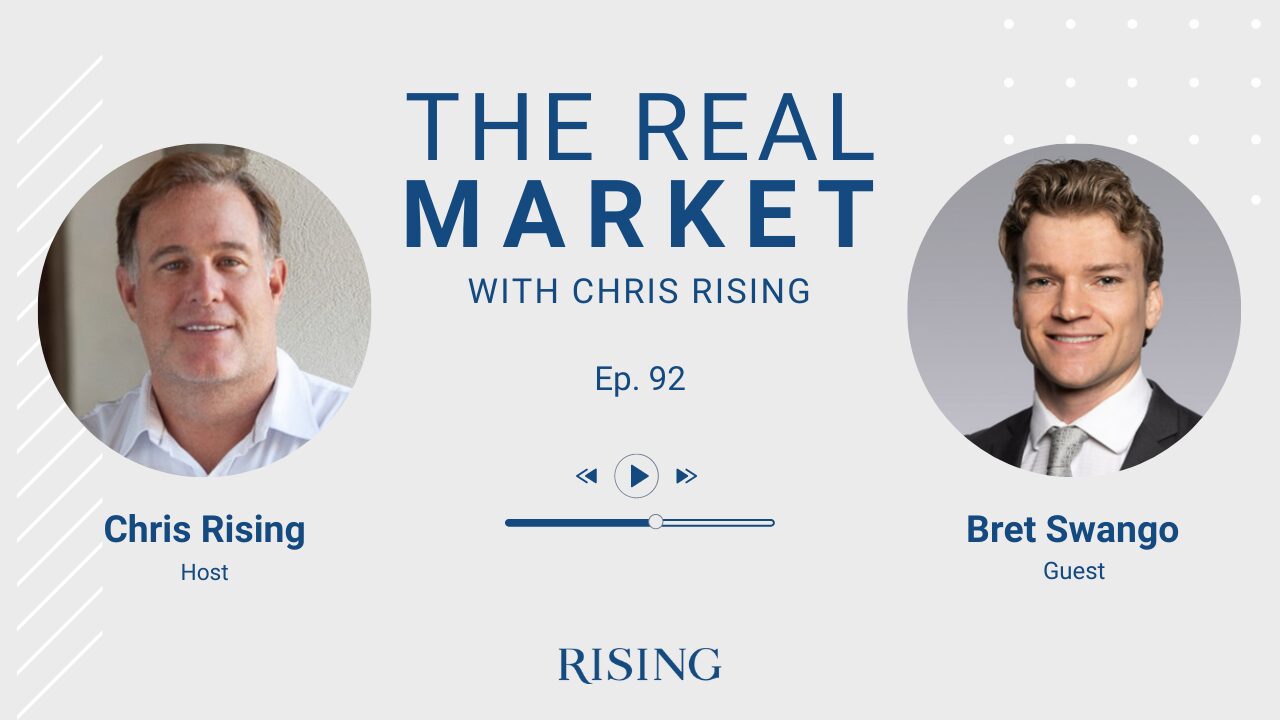
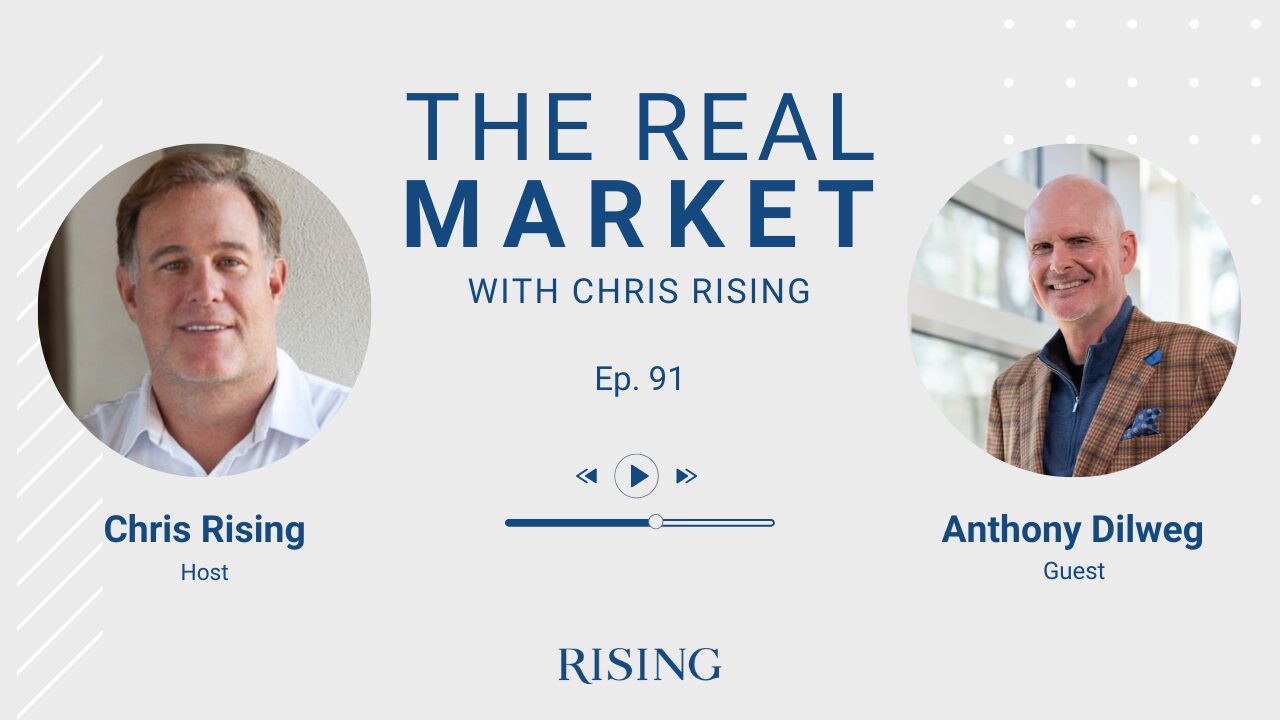
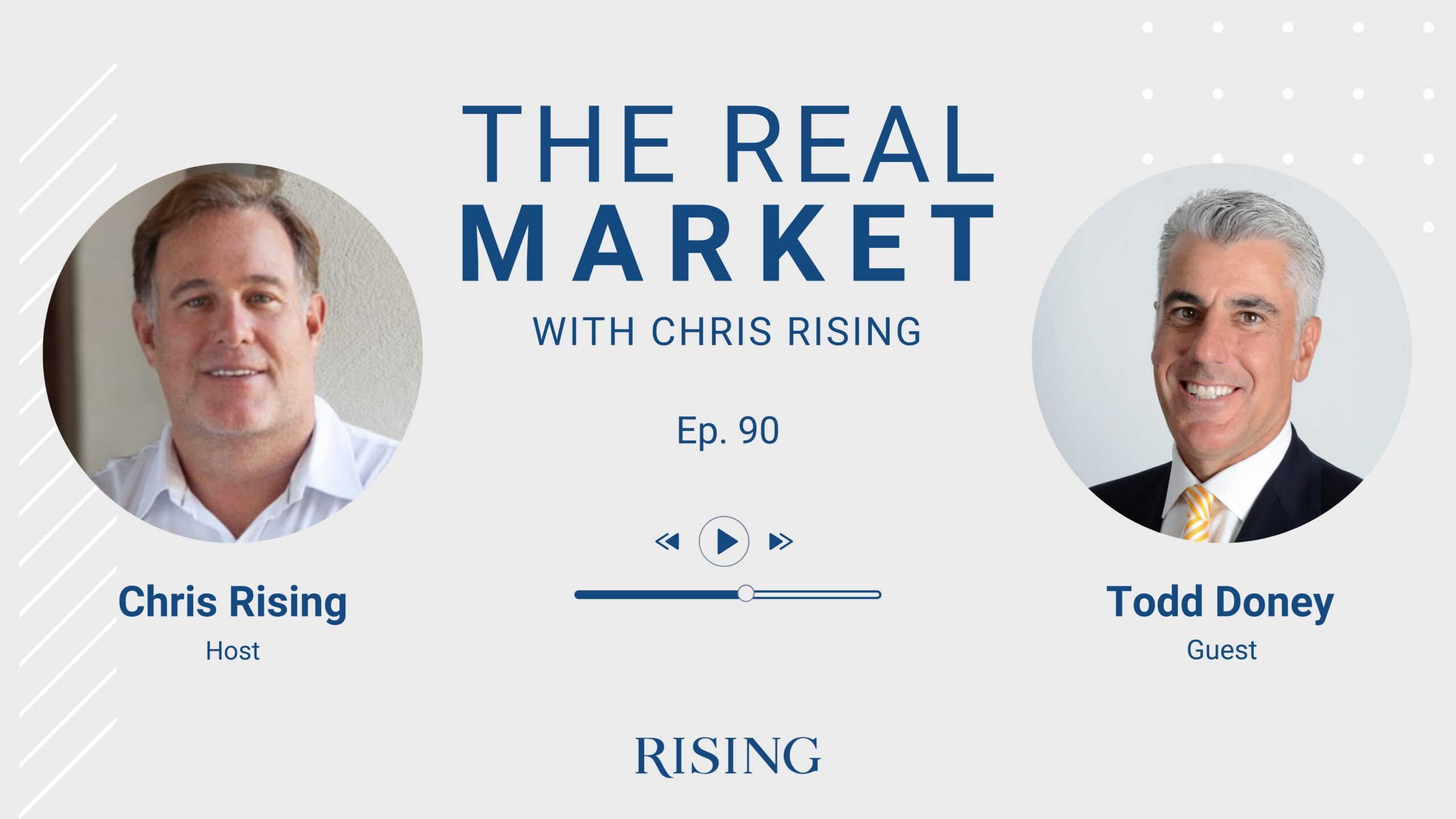
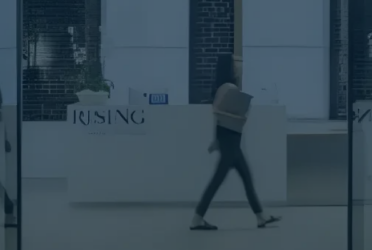
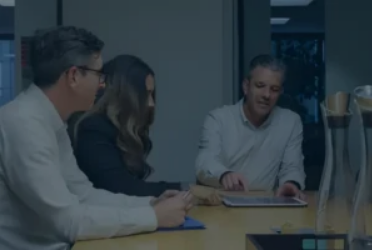
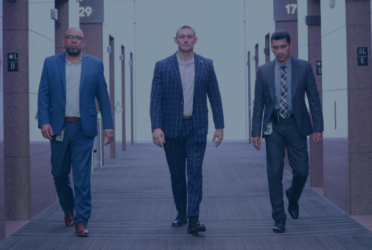
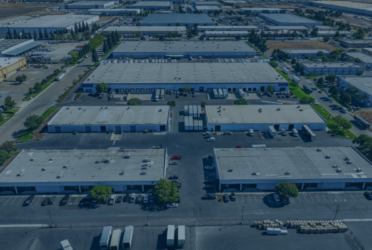
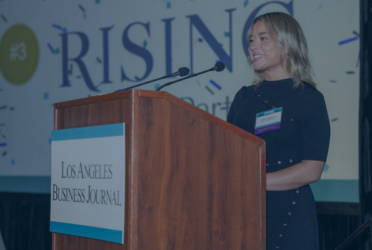
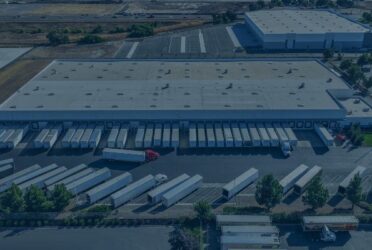
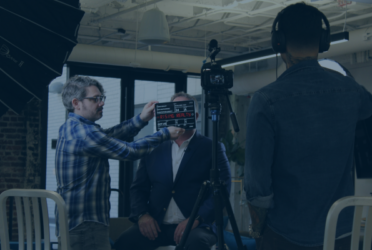
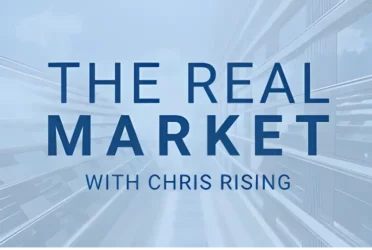 Podcast
Podcast